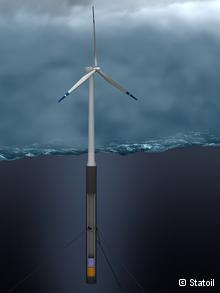Do negative expectations cause wind turbine health effects? (AEI analysis and commentary)
Health, Human impacts, Science, Wind turbines 5 Comments »AEI lay summary of:
- Simon Chapman, Alexis St. George, Karen Waller. 2013. Spatio-temporal differences in the history of health and noise complaints about Australian wind farms: evidence for the psychogenic, “communicated disease” hypothesis. Download this paper (pdf)
- Crichton, F., Dodd, G., Schmid, G., Gamble, G., & Petrie, K. J. (2013, March 11). Can Expectations Produce Symptoms From Infrasound Associated With Wind Turbines? Health Psychology. Advance online publication. doi: 10.1037/a0031760 Read/download this paper (Scribd)
Click here to download a 12p PDF version of this extended post
If the detail in this post is more than you can tackle, I encourage you to take a look at the first several paragraphs through the brief assessments, then click through and scroll all the way down to the final few paragraphs, which look beyond these two particular studies and reflect on the health effects issue and its role in the larger debate over wind farm siting
In Australia, the debate about wind farm siting standards has ramped up beyond what we’ve seen in the US and Canada. Several states have adopted more precautionary setbacks (2km, with some options for closer siting), and this has spurred some pushback from wind energy advocates. Meanwhile, the Waubra Foundation has become a central repository for information on negative impacts, and has released a series of reports and statements highlighting health effects and home abandonments, while calling for an even more precautionary 10km setback standard.
Recently, two reports were released in Australia that have garnered worldwide attention for their claim that health effects around wind farms are caused primarily by negative expectations promulgated via the web and local chapters of groups such as Waubra. One of these is a formal study published in the journal Health Psychology by a team from the University of Aukland, and the other is the latest (and most comprehensive) paper from Simon Chapman, a University of Sydney Professor of Public Health and outspoken skeptic about wind farm health claims.
I’ve long been concerned that the adamantly contradictory statements of both wind advocates and concerned citizens groups are likely to be inadvertently contributing to anxiety and stress among wind farm neighbors, which could well be a major contributor to many of the most widespread health effects (especially headaches and sleep troubles). These new papers are investigating plausible psychological factors, and both studies add some useful new insights; however, similar to my assessment of a recent peer-reviewed article touted as proof of health effects, digging into these two papers reveals data that is far less clear-cut and absolute than the conclusions drawn by the researchers, and especially as reflected in the simplified popular press accounts of the studies.
The short version of my assessment of these papers:
The Chapman paper gathers a wealth of information about complaint rates around all the wind farms in Australia, and taken at face value, makes an apparently convincing case for Chapman’s preferred hypothesis about the differences he finds: that the presence of local and national groups harping on possible health effects is the proximate cause of health complaints, and indeed, for the actual appearance of the symptoms themselves among wind farm neighbors. But Chapman’s insistence that the negative influence of “anti wind farm groups” can totally explain away all the noise problems is ludicrous. His paper frames all his data through this one lens, and makes no effort to consider other possible contributors to the differences he finds in complaint levels. At the same time, his inclusion of existing public health research on the nocebo effect and studies of psychologically-mediated responses to perceived environmental threats is a welcome addition to our consideration of wind farm noise issues; still, as I begin to dig into the actual academic studies that he cites, they seem to be at best suggestive of modest contributing factors, rather than offering data that’s strong enough to be posited as the sole or primary explanations for most noise complaints.
For example, the Crichton paper finds that expectations of negative health effects can create a statistically significant increase in the number and severity of symptoms reported by study subjects exposed to infrasound (and to sham infrasound). However, the actual data shows only moderate changes in reported health responses, especially in symptom severity, rather than a dramatic difference between the subjects primed with negative expectations and those who were given reassuring information prior to exposure to the sounds. The average severity of symptoms, rated on a scale of 0-6, averaged 1.67 for the group primed to expect no health effects, and an only slightly higher 1.94-2.13 among those primed to expect negative impacts—a far cry from the intolerable responses being reported by some wind farm neighbors.
Despite the fact that these papers don’t contain a “smoking gun” that explains away negative health effects, as wind advocates may be claiming, their findings can be seen as a likely part of the story. The small differences found in the Crichton study may be due to averaging over all participants; perhaps some individuals responded more dramatically than her data shows; a stronger effect on some individuals could be embedded in the similarly subtle yet statistically significant trends in the Nissenbaum study that found worse sleep and psychological health among those closer to wind farms. And the Chapman paper reminds us that those reporting health effects remain a small minority, even in areas with substantial community outcry. As AEI has often mentioned, even empathetic researchers tend to suggest that significant health effects occur in only 5-10% of the nearby population; as discussed below, a divide is emerging between those who feel that such small numbers reflect insignificant impacts, and those who feel that we can and should avoid or better minimize such effects by increasing setbacks.
A local example of health effects: While statistical or laboratory studies can provide valuable insights, they can also distance us from the actual experiences under consideration. In Falmouth, MA, dozens of turbine neighbors have had enough sleep and health issues that the town is considering removing two turbines. A bit over 10% of those living within a half mile have filed formal complaints; in some directions, 25% or more have had problems. This recent article features quotes from a couple of these neighbors (including one, Neil Anderson, who is a longtime renewable energy supporter), and from state and local wind advocates.
Click on through for a more complete summary of these papers, and AEI’s current reflections on the health effects controversies

 Watching the decade-long struggle in Massachusetts to build Cape Wind, the nation’s first offshore wind farm, researchers and state officials in Maine have chosen a different path: they decided to tackle the engineering challenges of building turbines that can float in deep water far offshore, rather than the social challenges of building wind farms in shallow water close to shore (which use fundamentally the same foundation designs as onshore turbines). Floating deepwater turbines can take advantage of even stronger, more consistent winds than their nearshore counterparts; along most of the east coast, offshore wind is far more reliable than onshore locations.
Watching the decade-long struggle in Massachusetts to build Cape Wind, the nation’s first offshore wind farm, researchers and state officials in Maine have chosen a different path: they decided to tackle the engineering challenges of building turbines that can float in deep water far offshore, rather than the social challenges of building wind farms in shallow water close to shore (which use fundamentally the same foundation designs as onshore turbines). Floating deepwater turbines can take advantage of even stronger, more consistent winds than their nearshore counterparts; along most of the east coast, offshore wind is far more reliable than onshore locations. In the years since, the two-year extension of the Bush-era temporary plan stretched to four, and finally the new proposed plan has been released. In truth, it isn’t all that different than the Bush plan in terms of total numbers of snowmobiles and snowcoaches, though it tweaks a few elements in ways that may reduce some impacts, especially air quality, over time. It seems likely that the noise impacts will be roughly similar to those documented in a series of studies we
In the years since, the two-year extension of the Bush-era temporary plan stretched to four, and finally the new proposed plan has been released. In truth, it isn’t all that different than the Bush plan in terms of total numbers of snowmobiles and snowcoaches, though it tweaks a few elements in ways that may reduce some impacts, especially air quality, over time. It seems likely that the noise impacts will be roughly similar to those documented in a series of studies we